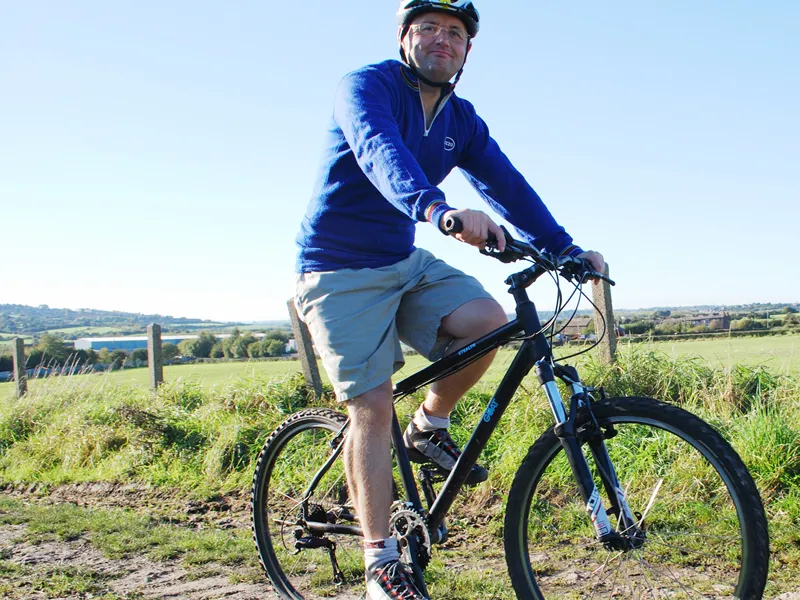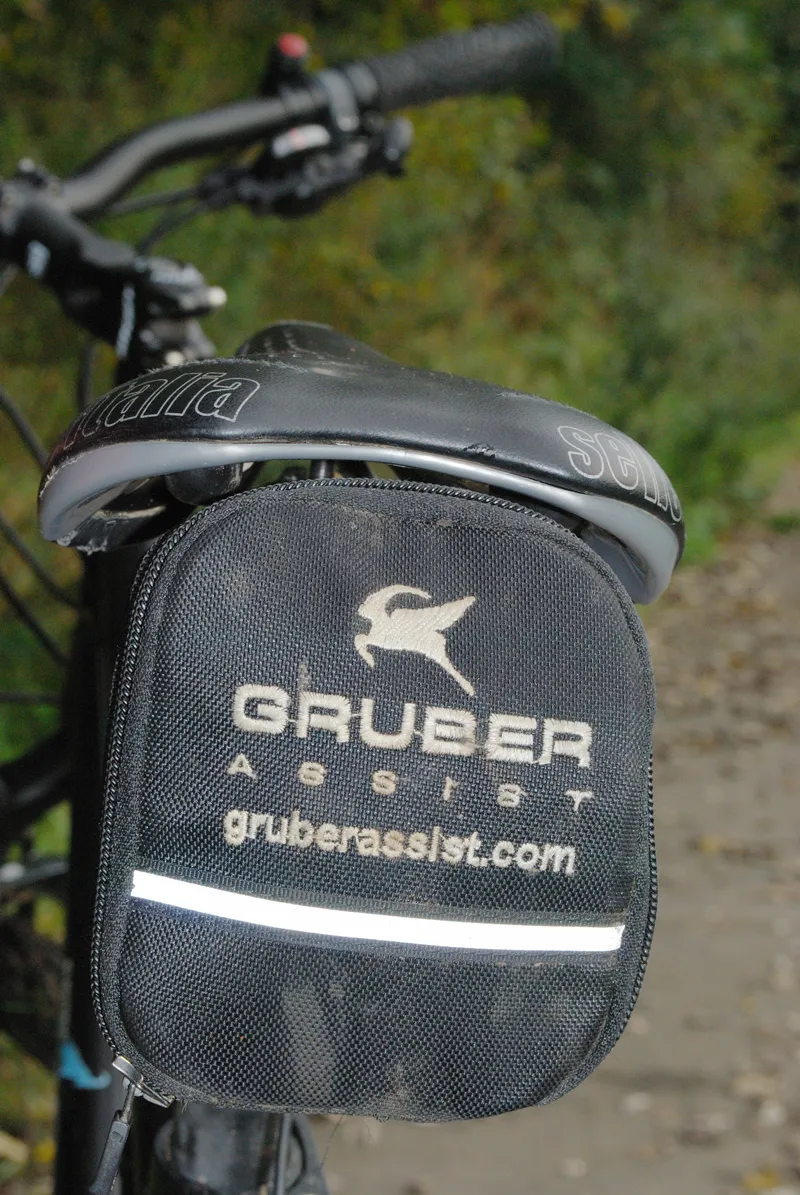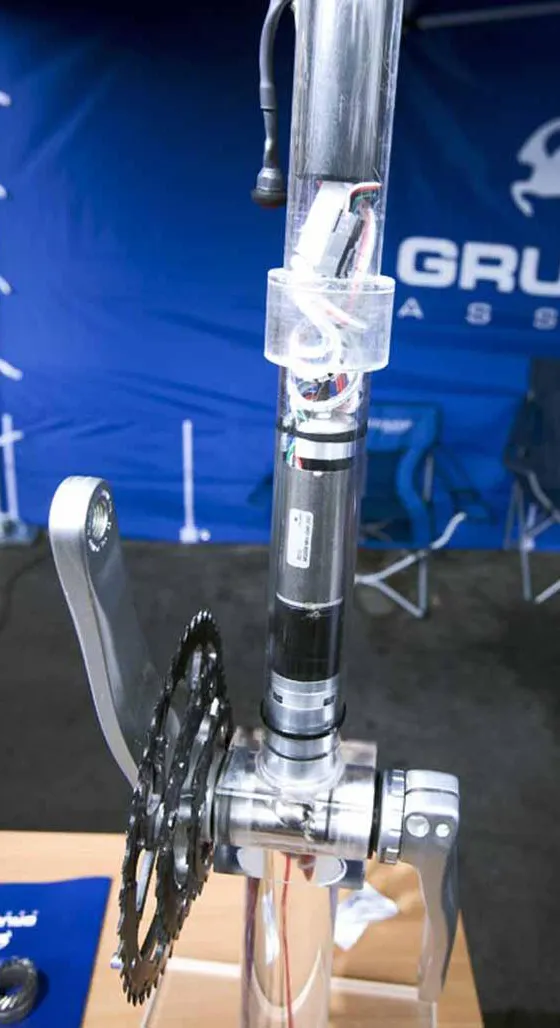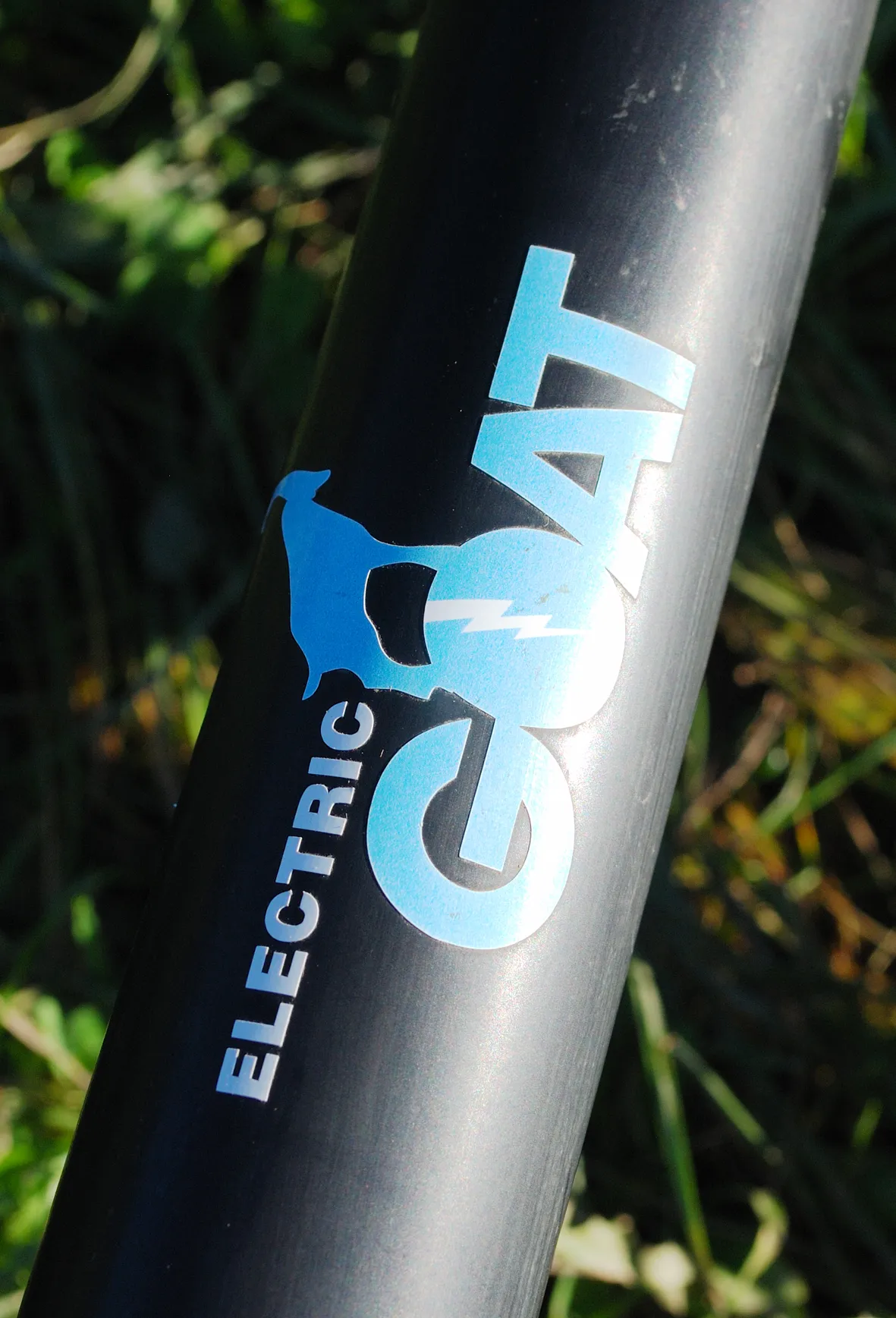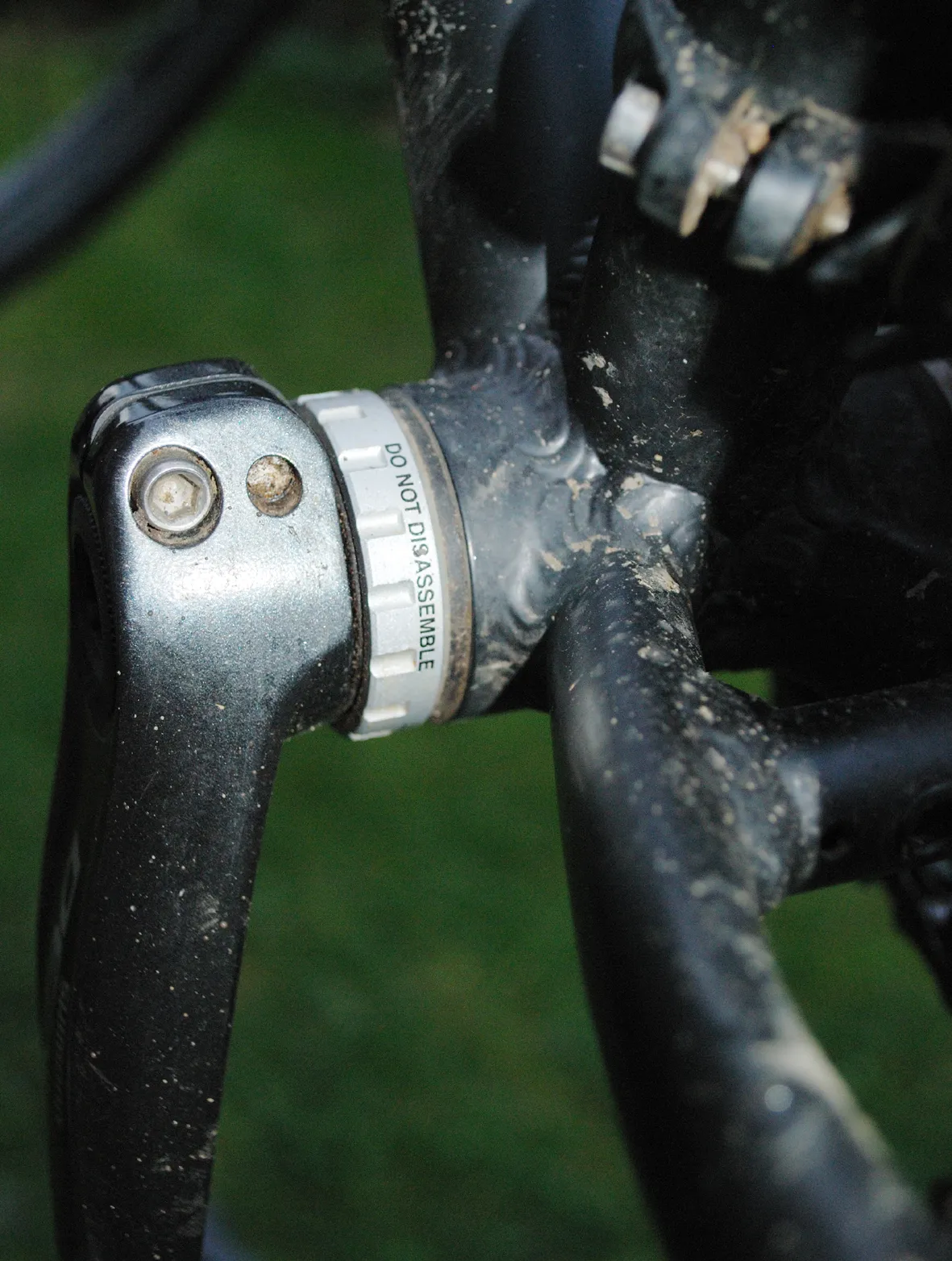The Gruber Assist kit is a highly unusual way of adding electric assistance to your pedalling. While most e-bike motors are housed in a wheel hub or directly drive the chain, Gruber’s motor sits vertically in the seat tube. From there, a bevelled gear drives directly onto another gear mounted on a standard Hollowtech II bottom bracket.
The system is almost entirely hidden from view – a small wire from the seat bag, which houses the battery pack, into the seatpost and a thin wire running from the on/off button mounted on the handlebar are the only evidence. It’s possibly this near-invisibility that has led to rumours about similar kits being used in professional races. Read on though, and you’ll discover why no rider would ever get away with covertly using the Gruber…
The Assist Kit can be fitted to most steel and aluminium frames (but not carbon fibre ones) with seat tube diameters of 30.9mm or 31.6mm, as long as the seat tube is centred over the bottom bracket. However, it must be fitted to very fine tolerances so an authorised dealer should do the installing. Our test bike was supplied ready fitted with the system by Electric Goat Bikes of North Yorkshire and is their ‘standard’ Forest Glider model.
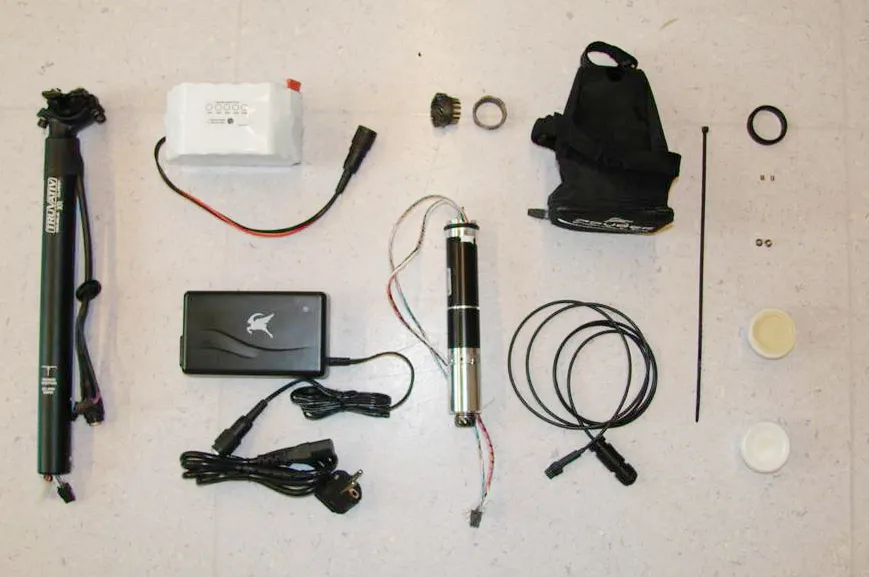
The Gruber Assist Kit must be fitted by an authorised dealer
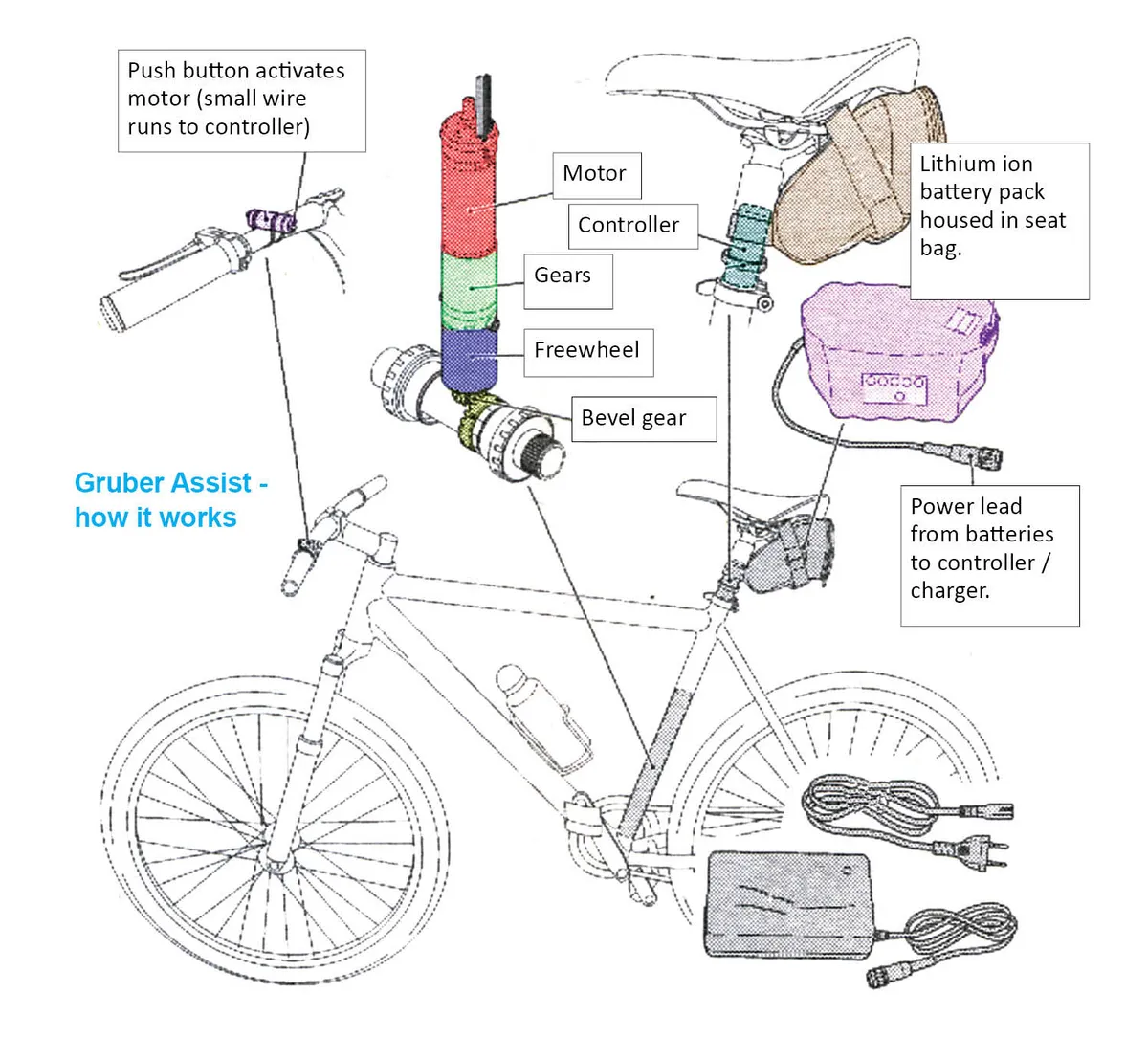
This diagram shows where all the different components fit on your bike
Ride & handling
More than any other e-bike kit we’ve tested, the Gruber is suited to specific conditions and styles of riding. It doesn’t suit stop-start town riding or technical mountain biking where you need to stop pedalling frequently. It also won’t blast you up the hills like some heavier-duty motors will, but you'd hardly expect that of a kit weighing less than 2kg.
Where it excels is on longer rides where you keep up a steady cadence. Most importantly, and unlike any other kit that we know of that's commercially available in the UK, it lets you retain the ride quality and feel of a normal bike, with only a minimal weight penalty.
Gruber differ from most other electric bike companies in the way they present the system as a fitness aid rather than something that will take all the effort out of cycling, and this is reflected in the product – it's aimed at people who enjoy cycling but want a little bit of assistance without disturbing the look, balance or handling of their bike.
The hardest thing to get used to during initial rides is the fact that the motor drives straight onto the bottom bracket. This means that as soon as you activate the system with the small red button on the handlebars, the pedals start to turn. Unless you're used to riding fixed-wheel bikes, this can be a bit disconcerting. It also means the kit isn't suitable for hub gear systems, which generally require you to stop pedalling to change gear smoothly.
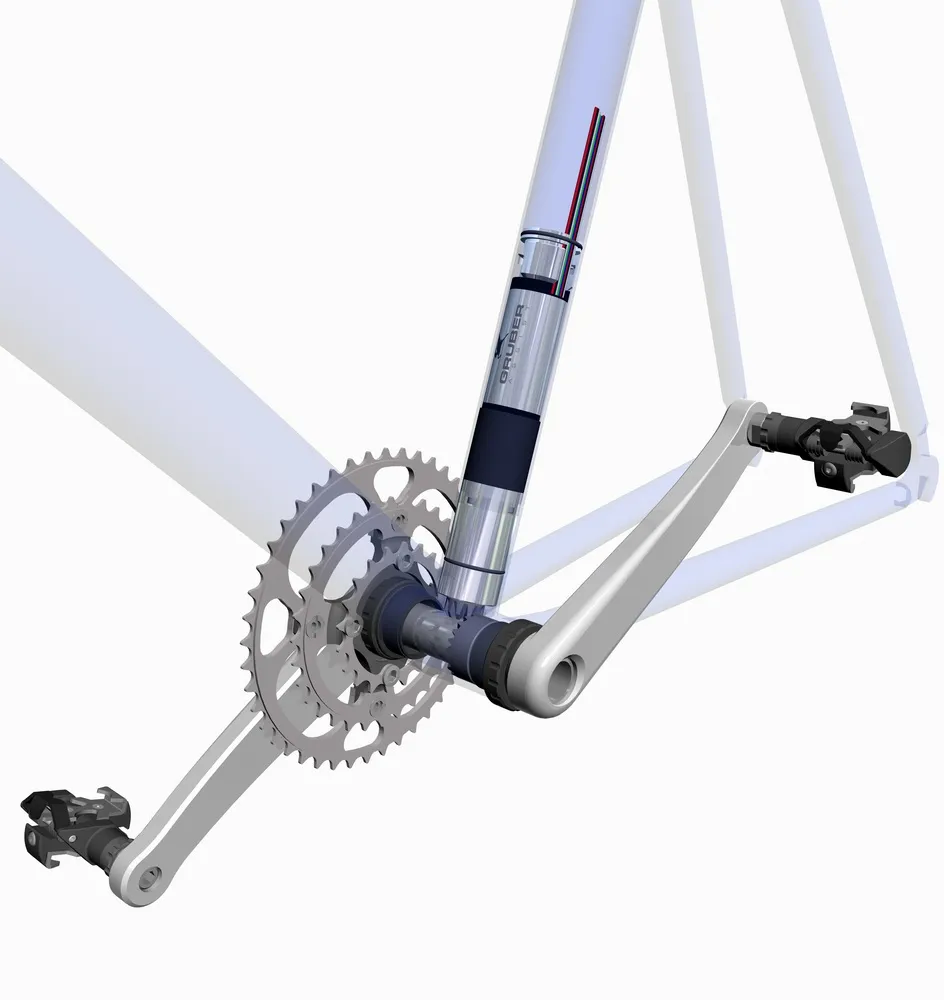
This cutaway shows how the motor sits vertically in the seat tube
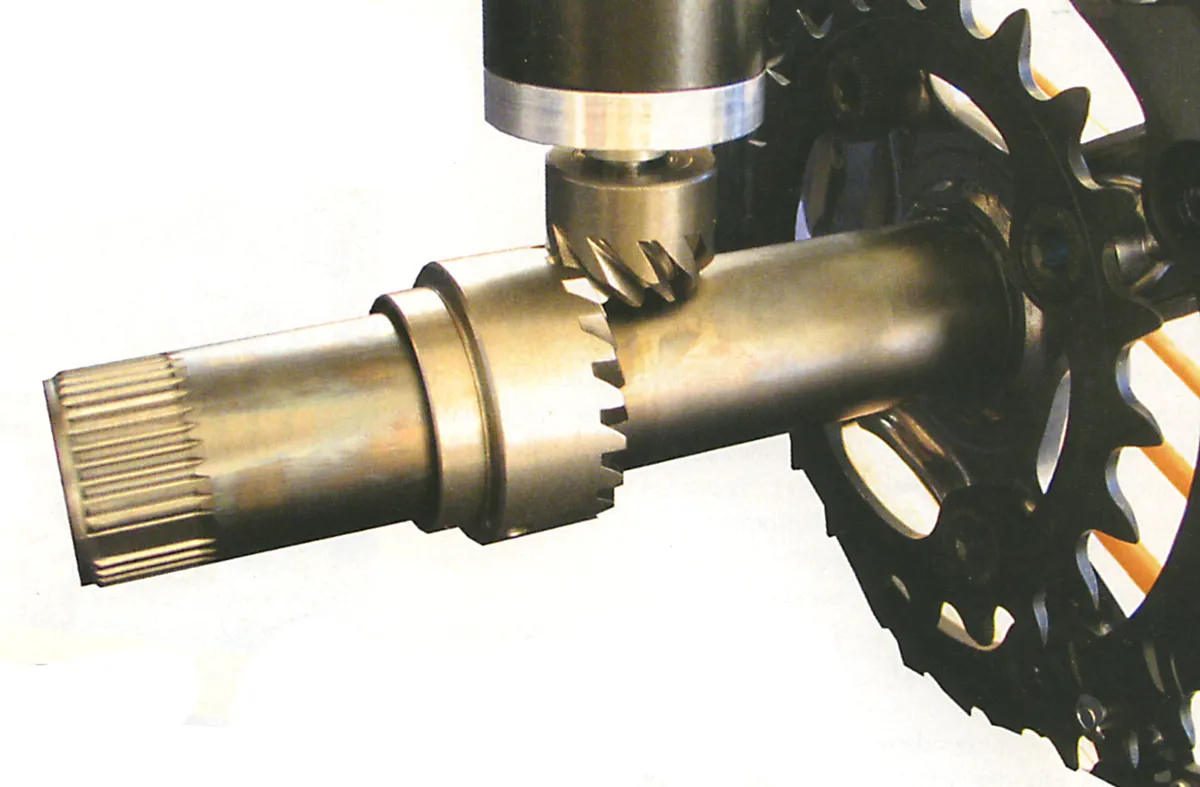
A bevelled gear drives directly onto another gear mounted on a standard Hollowtech II bottom bracket
Stick with it though, and experiment with gear choice and mixing and matching motor and cadence speed, and gradually the subtle power of this magical little motor becomes apparent. As standard, it can help propel you to speeds higher than the UK's maximum assisted speed of 25km/h (a tamer version is available for those wanting to ride legally on the road).
You can set the motor speed to match your current pedalling cadence (by pressing the on button for more than five seconds) but it actually seemed most effective at its maximum setting of 90rpm, except when climbing very steep hills, in which case you might naturally be turning the pedals a little slower.
Range is difficult to judge with such a system – alongside the usual variables of rider weight, terrain, riding style, etc, the question of correct gear selection and how hard you press on the pedals becomes critical to what distance you achieve. Also, there’s the fact that fitter riders will be inclined to leave the motor off for much of the time.
A Gruber-equipped bike rides pretty much like any other without power as the motor has a freewheel, so the assistance can be disabled until you encounter a steep hill or strong headwind. Our test riding, using a 203Wh battery, showed 20 miles was well within its capability if used fairly constantly – and if used sparingly you could probably ride all day on it. Whichever way you look at it, it’s a remarkably economical system.
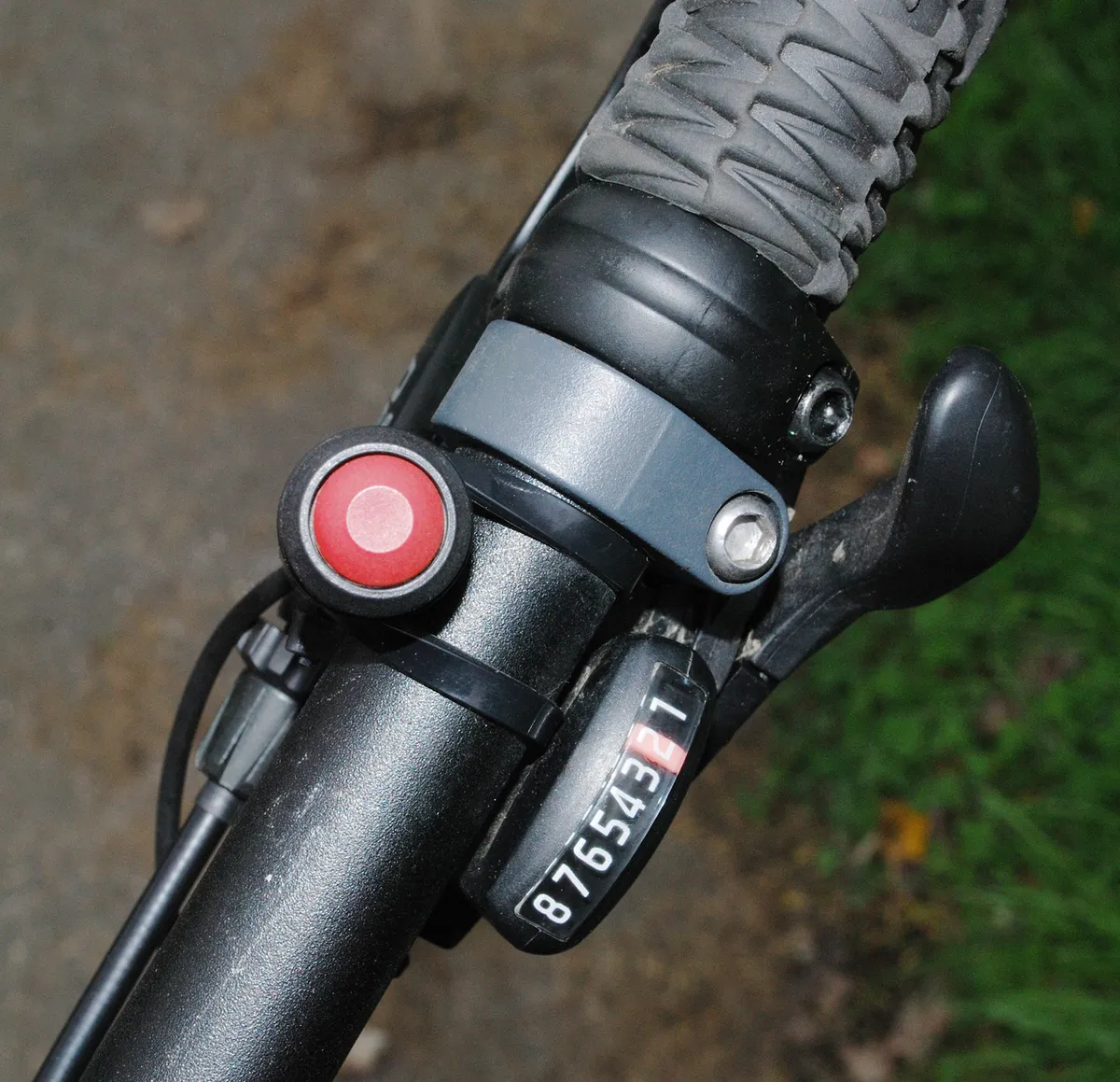
The Gruber is controlled by a simple on/off button which can also be used to set motor speed
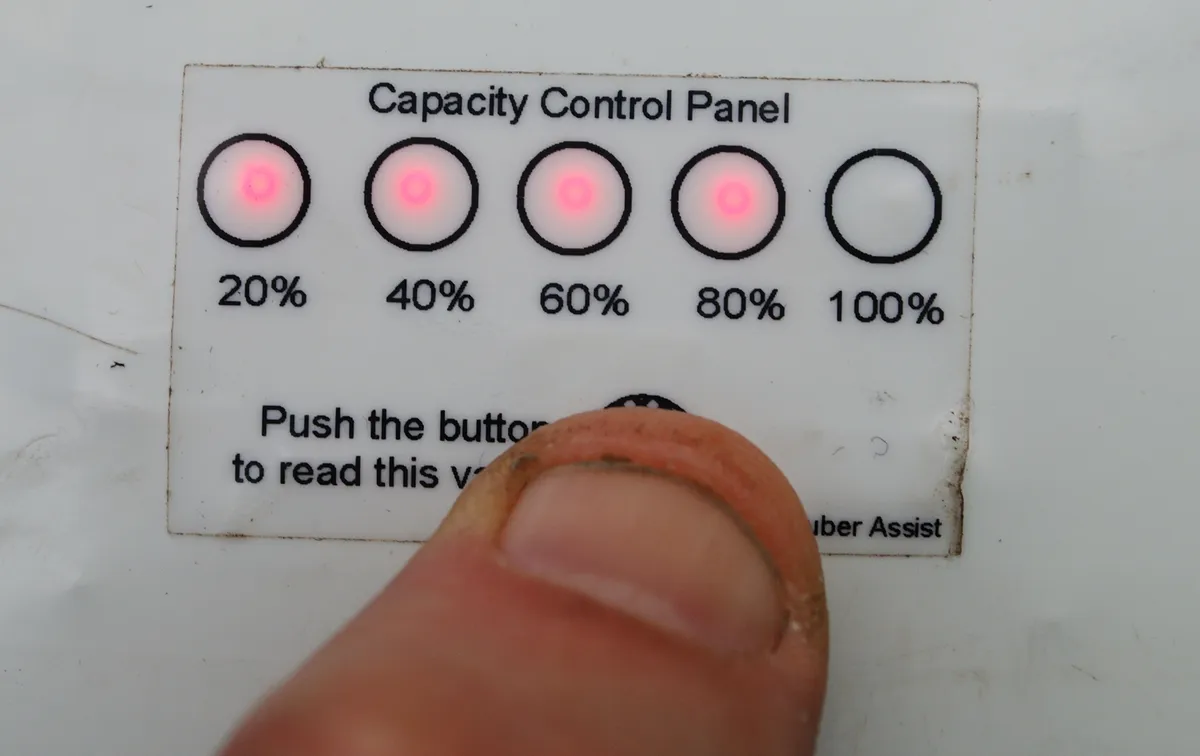
You must remove the battery pack to get at the battery level indicator
So, what's not to like?
For such a small motor, the Gruber makes a surprising amount of rather high-pitched noise. This would count it out for any rider looking for bit of stealthy assistance in a road race. The noise does have its upside though; rather like judging car gear changing from the sound of the engine, the pitch and speed of the noise gives a good clue as to when the motor wants you to change up or down so it can operate at its most efficient.
It would be nice to see a couple of tweaks to the system; a cutout circuit when the brakes are applied seems a good idea, as would some kind of quick-acting automatic on/off system if the cadence fell below a certain level (this would make town riding easier). As it is, the motor switches off if you stop pedalling altogether or if it senses resistance, such as when you perform an emergency stop.
Regular cyclists Nigel and Deb Coterill were among the first customers for the Gruber in the UK. Deb favours the lightweight Gruber over other kits she's tried, and says she can keep up with Nigel when he's riding his powerful Heinzmann hub-motor-equipped bike, so long as he uses it on the lowest 'Eco' setting. Nigel’s own testing confirms our findings: the kit will help you go faster for longer and with a little less effort.
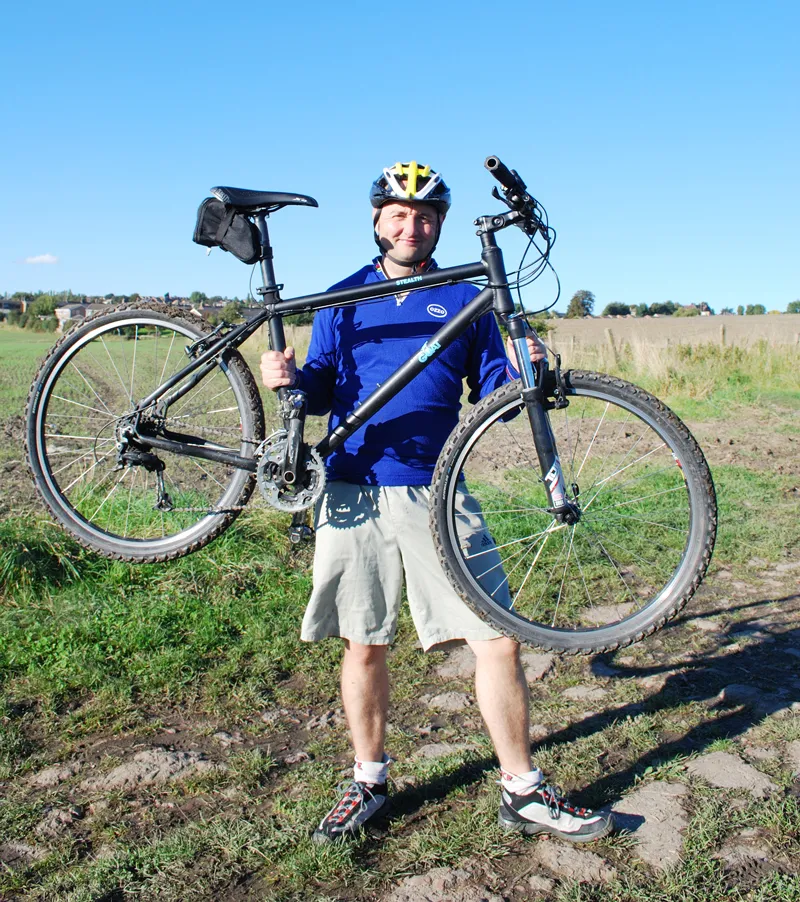
A Gruber equipped bike gains little weight
